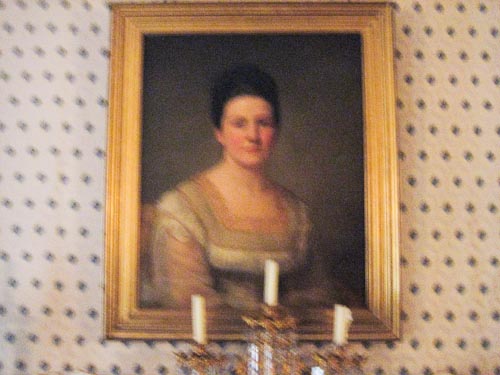Artifact

Today, in digital photography, an artifact is non-pictorial interuption of pictorial information. When we discuss cameras and scanners, digital processing, post-processing, reproduction, display, we talk about our ability to minimize the effects of that technology, the apparatus itself, to make it disappear. In class, teaching digital photography, I define pixelization, banding, jpg jaggies, and noise, and then demonstrate how to remove these undesirable (non-pictorial) elements from the picture. These visual boogeymen, these artifacts, remind us of the interface, the intermediate device, the camera, the computer. And we don't want to remember.
At the Roosevelt birthplace in Manhattan I joined a tour to explore the reconstructed Victorian brownstone that was created to remind us of the age that gave rise to the 26th American president. A decade or so after his death, in 1919, TDR's wife and family petitioned the US government to establish this memorial in the exact spot and according to the same flooorplan of the original Roosevelt home. Inside this three-dimensional non-virtual reality picture we climb stairs and walk through rooms draped in authentic reproductions of Roosevelt patterned wallpapers, curtains, upholstery, and watched by the original oil paintings of Roosevelt ancestors, all of which has been researched and reproduced from period catalogues and showrooms, or gathered from the extended Roosevelt clan and loaned to the memorial. Great expense has been undertaken to create this richly authentic environment, and the US Park Service guide's enthusiasm for the provenance of each artifact is abundantly evident. Surprisingly, I'm not burdened with wandering thoughts about the ephemeral nature of originality. As a result, the submersion experience is extraordinary.
Standing in the family drawing room, surrounded by the surface of 1889, my presence vacillates; I hear hoofs clomping on the cobblestone along 20th Street, my finger presses a smooth indentation, there's a reflection in my glasses from the LCD on the back of my digital camera.
If you visit the Roosevelt birthplace, and I strongly recommend that you do, keep your camera flash off, your ISO set high, and breath gently through the long shutter speed. Shoot low-res jpgs so your dream of today can emerge from the surface of yesterday. Embrace the artifact, and the process; try letting now and then blend inside the frame of your experience.
We erase today at the expense of forgetting yesterday.
Comments